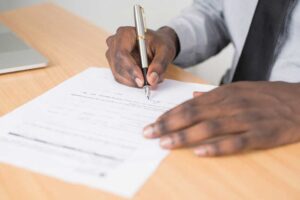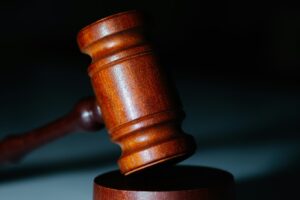A Guide to Navigating the Law for Pennsylvania Drone Users
In an era dominated by technological advancements, drones have soared in popularity among corporations and hobbyists alike. Yet, as with most emerging technology, there exists a gray area in the law. For instance, can you fly your drone over your neighbor’s yard in Pennsylvania? If so, are there any limitations?
Here is a breakdown of what the law says right now, how it interacts with federal regulations, and what is still left to be decided.
Pennsylvania Regulations
According to Pennsylvania legislation, drones are considered an unmanned aircraft. 18 Pa. Stat. and Consol. Stat. Ann. § 3505. The statute states that an unlawful offense occurs when someone uses an unmanned aircraft or drone intentionally or knowingly to:
- Conduct surveillance of another person in a private place;
- Operate in a manner that places another person in reasonable fear of bodily injury; or
- Deliver, provide, transmit or furnish contraband.
While a violation of the first two offenses is punishable by a fine of up to $300, a violation of the third provision is more severe and can be charged as a second-degree felony. This harsher punishment is because of its connection to the distribution of contraband. The law does provide exceptions for law enforcement officers, firefighters, emergency medical responders, government employees, and utilities.
Not only does the law create built-in exceptions for those mentioned above, it also states that the rules supersede any ordinance, resolution, rule or regulation from a municipality. Finally, the Pennsylvania statute establishes additional scenarios where a recreational drone user could be liable.
What About the Federal Aviation Administration?
While the Pennsylvania statute is clear regarding the situations in which a user may be held liable, there is another factor to consider when operating an unmanned aircraft. The federal government, this time under the purview of the Federal Aviation Administration (“FAA”), allows individuals to operate a small, unmanned aircraft without certification or operating authority if the operation adheres to all the following limitations:
- The aircraft is flown strictly for recreational purposes.
- The aircraft is operated in accordance with or within the programming of a community-based organization’s set of safety guidelines that are developed in coordination with the FAA.
- The aircraft is flown within the visual line of sight of the person operating the aircraft or a visual observer co-located and in direct communication with the operator.
- The aircraft is operated in a manner that does not interfere with and gives way to any manned aircraft.
- In controlled airspace (Class B, C, D and E) surrounding airports for a 3-mile radius, the operator of an unmanned aircraft must obtain prior authorization from the FAA before operating and comply with all airspace restrictions and prohibitions.
- In Class G airspace, which is classified as uncontrolled airspace, the aircraft can be flown from the surface to not more than 400 feet above ground level and must comply with all airspace restrictions and prohibitions.
- The operator must pass an aeronautical knowledge and safety test and maintain proof of test passage to be made available to the FAA or law enforcement upon request.
- The aircraft must be registered, and proof of registration is made available to the FAA or law enforcement upon request.
A recreational drone user could be liable for violating any of the eight requirements, but beyond that, even if they are operating in uncontrolled airspace (Class G space), if the drone flies too low, it may be considered a trespass.
Criminal Trespass?
While the case law surrounding drone usage is still evolving, it does seem that the issue of criminal trespassing is more settled. In Commonwealth v. Namack, the court noted that in Pennsylvania, in order for someone to be criminally liable for trespass, they need to possess intent. The court reasoned that the prosecution must prove that the defendant:
- Entered or remained on property without the right to do so;
- Entered or remained on property despite knowing that they did not have the right to do so; or
- Received direct or indirect notice that they are not allowed to trespass.
These considerations, coupled with the fact that a citizen only owns the airspace above their property as far as is necessary to enjoy the use of their land without annoyance, mean that simply flying a drone over someone’s property does not in itself constitute a criminal trespass.
Civil Claims
Civil trespass is defined as entering onto someone’s property without the permission of the owner. The landowner can sue the trespasser in civil court for any damage the trespasser causes. If there isn’t any damage, the owner can sue for a technical trespass and collect $1.00. This means that drone users can be sued for civil trespass when they fly over someone else’s property without permission at a level above the ground that interferes with the owner’s ability to enjoy their property without annoyance. Unfortunately for drone users, that height has yet to be defined.
Private nuisance is defined as an unreasonable interference with the quiet use and enjoyment of another person’s property. Damages could include actual damage caused and/or an order by the court requiring the offender to abate the nuisance. This means a drone user can be sued for private nuisance when they fly over someone’s property at a height that is unreasonably close to the surface and interferes with the owner’s ability to quietly use and enjoy their property. But what is that height?
The Legal Grey Area
While entering the airspace above someone’s property does not necessarily constitute a criminal or civil trespass or nuisance, any air above 400 feet is subject to FAA regulation and any air too close to the ground could be considered a trespass or nuisance. This means that there is a narrow zone of airspace with a ceiling at 400 feet and a floor that has not yet been decided, where a drone user can fly unencumbered. Until the case law more fully evolves, drone users should be careful to fly below 400 feet, but not too low, otherwise, they run the risk of trespassing or being held liable for a nuisance. Contact Dan Lynch at 724-776-8000 to discuss.





